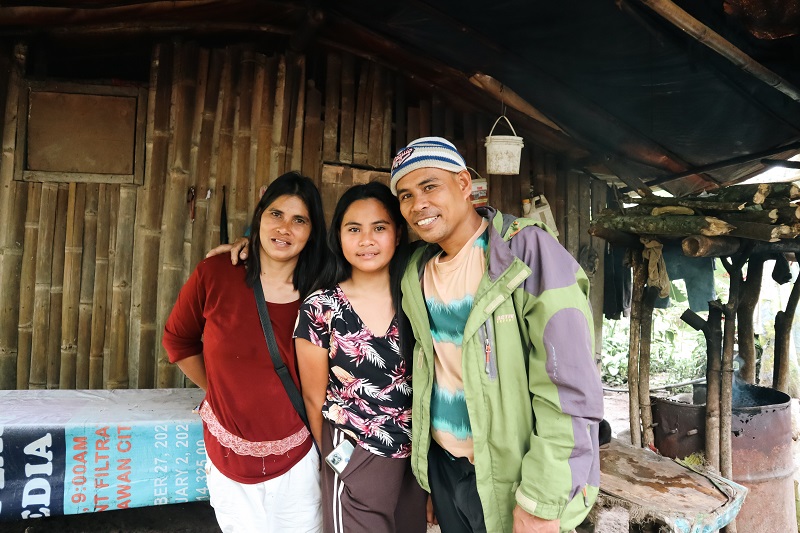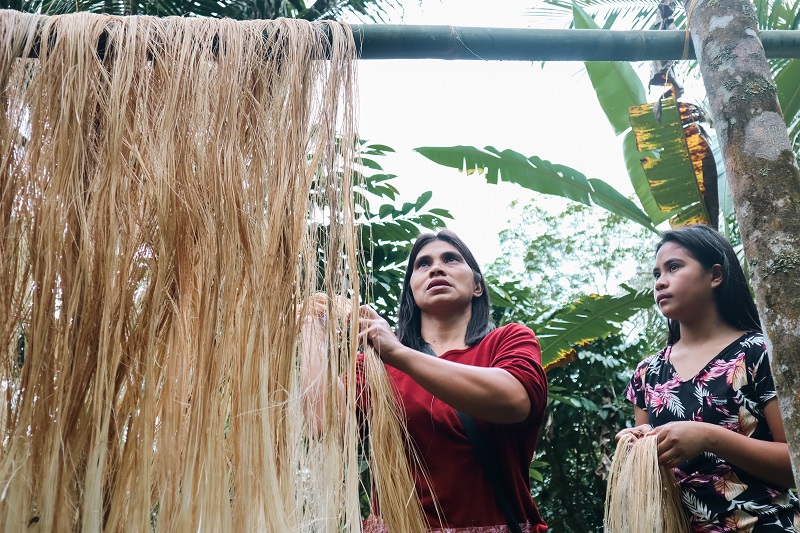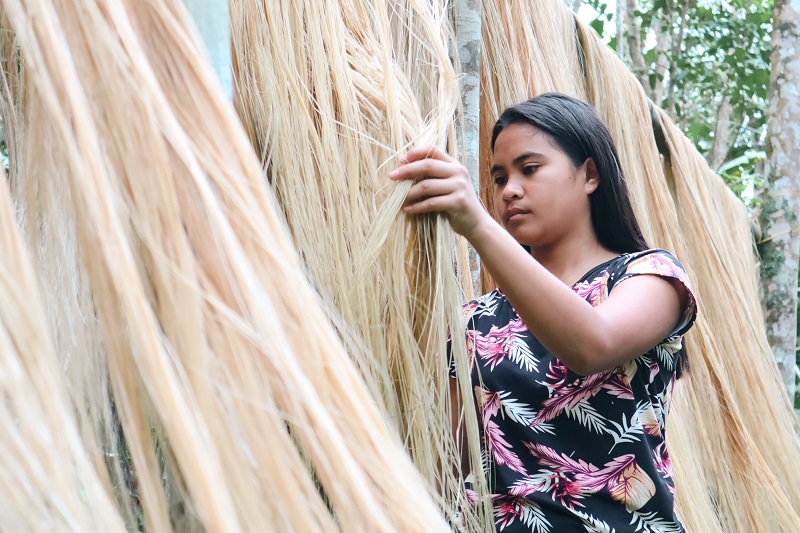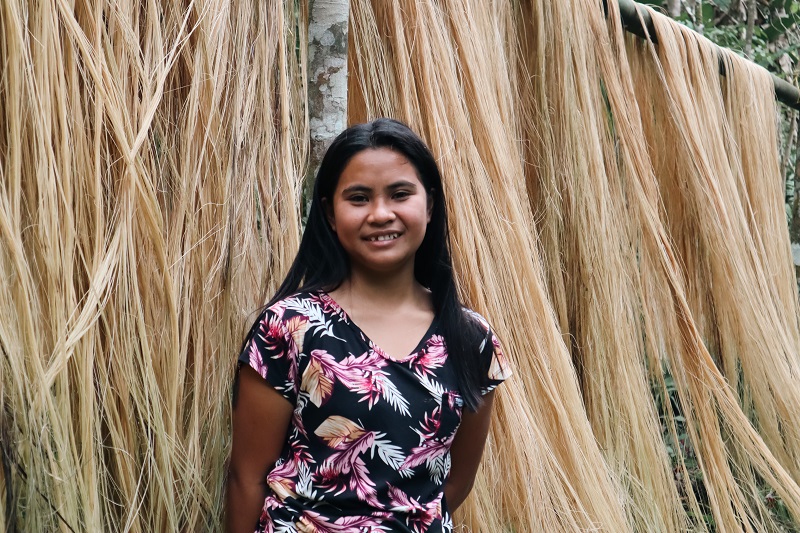In North Cotabato, Philippines over 40% of the local population lives below the poverty line. It is a place susceptible to climate change-related disasters such as typhoons and floods.However, the local farming community holds a viable solution to these climate change issues—abaca. The abaca plant absorbs carbon dioxide and its water-holding capacity prevents soil erosion, landslides, and floods, protecting the local community from disasters. Additionally, abaca fibers can be used to make biodegradable products like textiles, bags, and more—reducing the (plastic) wastes produced by daily mankind activities.
Key Challenges in North Cotabato
- 44.8% ( Over 606,000 people) of North Cotabato inhabitants live below the poverty line
- 80% of the abaca fiber is produced by the indigenous communities and poor households in the province, especially along Mount. Apo buffer zones and forest areas facing North Cotabato
- 30% of the poorest residents rely on the Abaca industry for a credible livelihood source
- Marginalized sectors have an estimated abaca plantation of 80 hectares that has a scaling prospective of up to 1,000 hectares within the ancestral domain claim of the indigenous people.
How abaca provides a solution for climate issues
- Disaster Protection: The abaca plant absorbs carbon dioxide and its water-holding capacity prevents soil erosion, landslides, and floods, protecting the local community from disasters.
- Alternative to non-biodegradable waste: The Abaca's strong and versatile fibers allow it to be utilized in various forms such as reusable grocery bags, composite for automotive and construction, meat casing, small units such as tea bags, coffee filters, currency notes, insulation papers, and so on.
- The Philippines is known to be the top exporter of abaca in the entire world, supplying about 87% of the global requirements. However, it is not without challenges at its grassroots level, specifically in perfecting its scale of production efforts.
Some challenges
o Quality management and control is the main challenge identified: Infected planting materials from suppliers result in uncertainty of production at the farmer’s level - sometimes infected with diseases and lacks monitoring of quality assurance. As a result, farmers or producers are planting the wrong varieties or infected planting materials.
o Need for diverse value chain capacity builders and influencers: Provincial Agriculture Office of North Cotabato will take a lead role as orchestrator of the industry; World Vision synchronizes program interventions with the vulnerable groups (Indigenous people and resource-poor abaca growers).
World Vision aims to empower the community to become stewards of the environment and adopt responsible livelihood practoces against climate change.
- Train community in environmentally responsible Abaca farming: Conduct Environment Protection and Climate Change Adaptation knowledge sharing and install Abaca Nursery and Ecological Shared Facilities (demo farm, drying area, and storage facility) to improve farmers' ability to practice abaca production
- Procurement of and distribution of quality 50,000 Abaca Seeds to 500 households to enhance Abaca farming as a sustainable livelihood
- Supplementary livelihood training: Equip families with eco-friendly product development like converting Abaca resources into slippers, eco-friendly bag, hats, ropes, placemats and other household materials
Target number of beneficiaries: 109,595 people
Hope sprouts amid the ruins
A child earthquake survivor rebuilds her life through abaca farming
When a 6.5 magnitude earthquake struck the island of Mindanao, Philippines, about 40 people lost their lives. 800 individuals were injured. Many families were affected by the disastrous havoc. Houses were flattened. Livelihoods were destroyed.
“I was at home washing plates when the earthquake happened,” narrates Charice, 14. She is from a small barangay in Kidapawan, one of the most affected cities in North Cotabato. Her family belongs to the 117 households that are displaced in the area.
“When It happened, I was so worried and scared. I was looking for my parents and siblings. They were working on the farm. I thought something happened to them,” she recounts.
“We ran directly to the basketball court to take refuge. I was frantically looking for my family. We all found each other there,” she says. Despite the experience, she is thankful for her family’s safety. Nevertheless, she expresses a feeling of distress and remorse seeing their beloved home severely damaged by the disaster.
“It was painful to leave our house. I grew up there. I have a lot of memories in that place,” she utters as she wipes her tears.
“Those were difficult times. We didn’t have a decent place to stay,” she says. She reveals that she was traumatized experiencing the disaster, witnessing the devastation right in front of her eyes.
“I remember an instance where we were doing nothing. We lost our sense of time. We didn’t have the appetite to eat because of the trauma.”
Amidst the difficulties they were experiencing at that time, help came and knocked on their door. “World Vision visited us and provided us with our immediate needs. We were given relief goods. I even received school supplies to continue my education,” Charice says.
World Vision has been helping Charice’s community even prior to the disaster. The organization provided sponsored families in the project area with abaca shoots as a start-up to improve their farms and increase their existing livelihood opportunities.

“We have received about 500 abaca shoots at that time,” Charice shares. When the disaster happened, she thought that they lost everything. However, their abaca farm survived and helped them restore their income, gradually reviving their lives.
“I remember my father earning PHP36,000 from our abaca products. It really helped us meet our needs. I was very happy,” she proudly shares.
In her spare time, Charice would accompany her mother and father to their abaca farm to help them. They would wake up as early as five in the morning to visit their farm. Her usual task is to hang the abaca fibers in a makeshift bamboo rack to dry them up. The unfortunate experience she had made her appreciate their farm more.


She also realizes the importance of taking care of the environment to avoid disasters and address climate change. “It is very good if we could plant more trees to save the earth,” she says. She also emphasizes the numerous benefits of using and patronizing organic products made by the local farmers in her community. “Our abaca product has many uses. We can create bags, shoes, even native dresses. These are biodegradable materials. In this way we can minimize the use of plastic materials that are non-biodegradable.”

SAFEGUARD THE FUTURES OF THE CHILDREN AND PROTECT THE ENVIRONMENT
What we do now can dramatically reduce the number of poor children affected by the most severe impacts of climate change in the coming decades.
Donate to support our efforts in fighting climate change and help children grow up in a more sustainable environment.
With your charity support, we can all do our part in making our earth sustainable.





